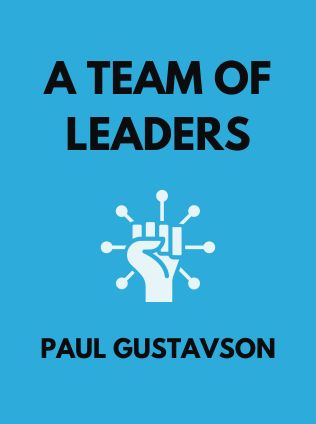
A Team of Leaders
Empowering Every Member to Take Ownership, Demonstrate Initiative and Deliver Results
By Paul Gustavson,
Published 03/2014
About the Author
Paul Gustavson and Stewart Liff are esteemed figures in the fields of organizational design and human resources management. Gustavson is the founder of Organization Planning & Design, Inc. (OPD), a consultancy dedicated to creating high-performance teams. He has served as the chair of the Marriott School of Management's OB/HR Advisory Board and has co-authored books such as "The Power of Living by Design" and "Running into the Wind." Liff, on the other hand, is an HR expert and visual management specialist. He is the president and CEO of Stewart Liff & Associates and has authored several books, including "Managing Government Employees" and "Managing Your Government Career." Their combined expertise provides a comprehensive perspective on team dynamics and leadership.
Main Idea
"A Team of Leaders" challenges traditional team structures by proposing that the key to a successful organization lies not in the individuals but in the design of the team itself. The authors argue that by redesigning team systems, processes, and structures, organizations can empower every team member to take on leadership roles. This shift is achieved through the Five-Stage Team Development Model, which progresses teams from a traditional, leader-directed setup to a self-managed, collaborative environment where each member contributes as a leader.
Table of Contents
- Introduction
- Creating Advantage Through the Five-Stage Team Development Model
- Secrets of Great Design
- Teams Have Processes, Too
- Team Value Creation Model
- Developing and Managing Knowledge is Key to Team Performance
- Visual Management
- Conclusion
Introduction
The authors begin by addressing a common issue in workplaces: the stagnation of team performance. Despite assembling capable individuals, many teams fail to achieve their potential because they operate in outdated structures that stifle initiative and responsibility. Gustavson and Liff suggest a paradigm shift where every team member becomes a leader, fostering an environment of accountability and continuous improvement. This approach not only enhances performance but also makes work more engaging and fulfilling.
The Five-Stage Team Development Model
The cornerstone of the book is the Five-Stage Team Development Model, which describes the evolution of teams from leader-directed units to fully self-managed groups. The stages are:
- Stage One: Leader-Directed - Teams are heavily reliant on the leader for direction and decision-making.
- Stage Two: Collaborative - Team members begin to work together, but the leader still plays a significant role in guiding the team.
- Stage Three: Developing Leadership - Members start taking on leadership roles, though the leader still oversees the process.
- Stage Four: Empowered - The team operates with minimal supervision, and members hold each other accountable.
- Stage Five: Self-Managed - The team is fully autonomous, with each member acting as a leader.
Creating Advantage Through the Five-Stage Team Development Model
The Five-Stage Model is a roadmap for teams aiming to become self-managing entities. At each stage, the team develops critical capabilities and overcomes specific challenges. For instance, in Stage One, the team leader plays a central role, making most decisions and providing guidance. As the team progresses to Stage Two, members begin to collaborate more, but the leader still needs to mentor and coordinate efforts.
By Stage Three, members start to assume leadership roles, though the team still requires guidance on complex issues. At Stage Four, the team becomes largely self-sufficient, with members taking responsibility for various aspects of the team's work. Finally, in Stage Five, the team operates independently, with each member fully engaged in leadership activities.
Sign up for FREE and get access to 1,400+ books summaries.
You May Also Like
The Subtle Art of Not Giving a F*ck
A Counterintuitive Approach to Living a Good Life
By Mark MansonRich Dad Poor Dad
What the Rich Teach Their Kids About Money - That the Poor and Middle Class Do Not!
By Robert T. KiyosakiHow To Win Friends and Influence People
The All-Time Classic Manual Of People Skills
By Dale CarnegieQuiet: The Power of Introverts
The Power of Introverts in a World That Can't Stop Talking
By Susan Cain



















